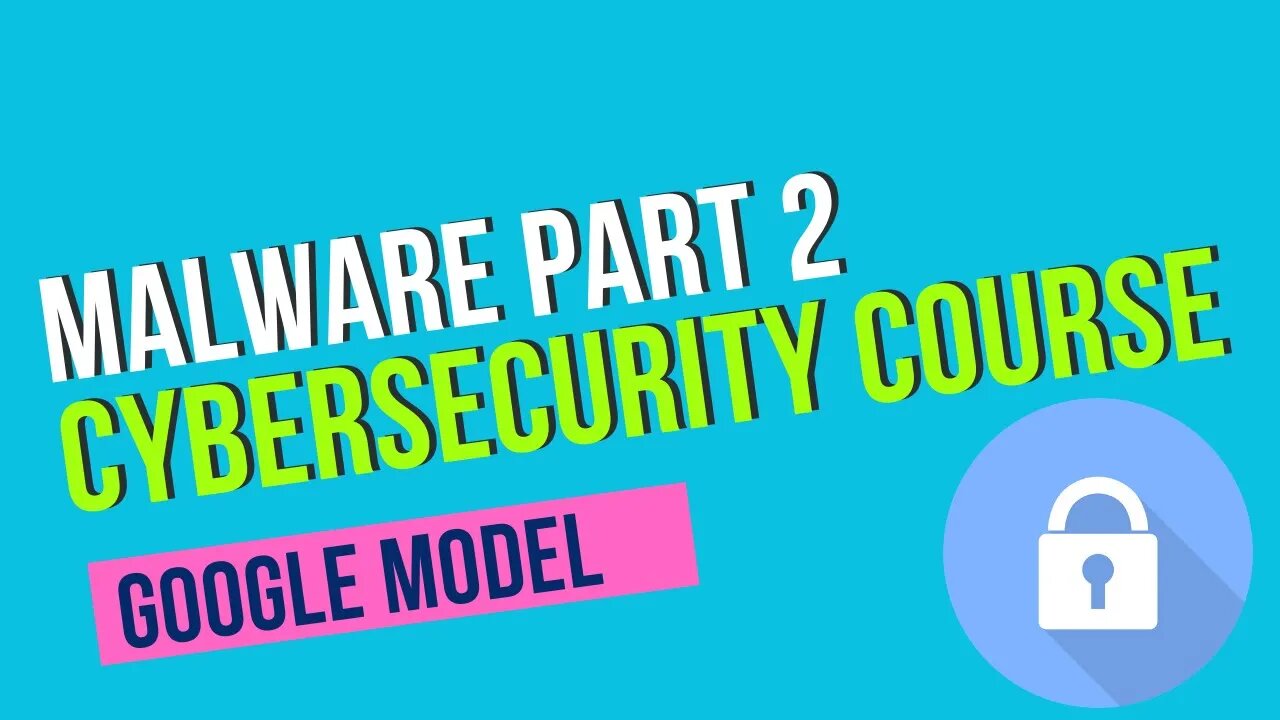Premium Only Content

5. Malware Part 2
Malware
Stealing computer resources refers to the unauthorized and malicious usage of a computer's processing power, memory, network bandwidth, or other system resources by external entities. This can occur through various means, such as malware infections, hacking attacks, or unauthorized access. The motive behind stealing computer resources can vary, ranging from financial gain to disrupting computer systems or conducting large-scale attacks.
One common form of stealing computer resources is cryptojacking, where malware infects a system and covertly utilizes its resources to mine cryptocurrencies. The malware runs in the background, consuming CPU or GPU power, which can significantly impact the performance and efficiency of the infected computer. Cryptojacking not only affects individual users but can also target organizations, leading to increased electricity bills, decreased productivity, and potential hardware damage.
Another method of resource theft involves botnets, which are networks of compromised computers controlled by a central command-and-control server. These botnets can be used to launch distributed denial-of-service (DDoS) attacks, overwhelming targeted systems or websites with a massive influx of traffic, rendering them inaccessible to legitimate users. The participating computers' resources are harnessed to execute these attacks, often without the knowledge of their owners.
Resource theft can also occur through unauthorized access to computing infrastructure, such as cloud servers or enterprise networks. Sophisticated attackers exploit vulnerabilities in security measures to gain control over these resources and use them for their own purposes. They might launch further attacks, store illegal content, or conduct activities that violate the terms of service of the compromised infrastructure, potentially causing legal and reputational consequences for the owners.
To mitigate the risk of resource theft, individuals and organizations should employ robust security measures. This includes keeping systems and software up to date with the latest security patches, using reliable antivirus and firewall software, implementing strong access controls and authentication mechanisms, regularly monitoring network traffic and resource usage, and educating users about safe computing practices. By taking proactive steps to protect their resources, individuals and organizations can minimize the impact of resource theft and maintain the integrity and performance of their computer systems.
-
 24:01
24:01
Winston Marshall
4 days agoThe TRUTH About The UK Farmer Protest What No One Is Talking About...
67.3K155 -
 3:21:56
3:21:56
Tate Speech by Andrew Tate
14 hours agoEMERGENCY MEETING EPISODE 93 - ME TOO!
248K163 -
 3:21:42
3:21:42
FRENCHY4185
10 hours agoPRESTIGE AND CAMO GRIND : BLACK OPS 6
68.9K2 -
 1:29:47
1:29:47
Real Coffee With Scott Adams
10 hours agoEpisode 2669 CWSA 11/24/24
97.5K37 -
 13:52
13:52
Hershberger's Kitchen
21 hours agoTwo Delicious Dip and Spread Recipes to Try, Inspirational Thought
84.6K6 -
 3:41:05
3:41:05
Sacred Sage
13 hours ago $5.09 earnedDaz3D: Attempting to Finish Zoe Conversation!
64.7K5 -
![[Stream #19 ] Gaming, Chatting, you know the drill!](https://1a-1791.com/video/s8/1/W/f/M/4/WfM4u.0kob-small-Stream-19-Gaming-Chatting-y.jpg) 8:14:24
8:14:24
OneRandomDolly
10 hours ago[Stream #19 ] Gaming, Chatting, you know the drill!
74.9K4 -
 11:07
11:07
TimcastIRL
1 day agoElon Musk Suggests He’ll BUY MSNBC, Joe Rogan Will REPLACE Rachel Maddow
95.2K114 -
 34:24
34:24
The Rubin Report
1 day agoFormer CEO: The Aftermath of Vice Media & What's Next for Mainstream Media | Shane Smith
107K74 -
 9:14:23
9:14:23
tacetmort3m
2 days ago🔴 LIVE - BECOMING THE UNTOUCHABLE (RADIATION WHO?) - STALKER 2 - PART 3
48.5K6